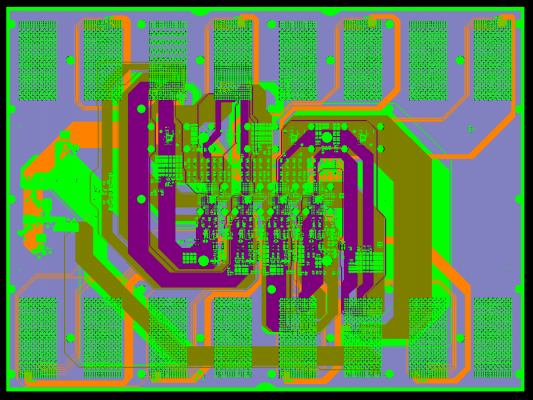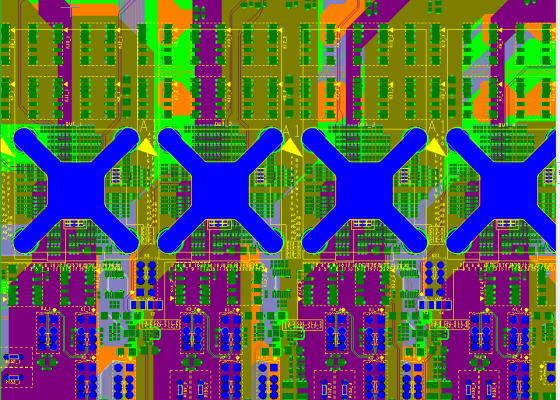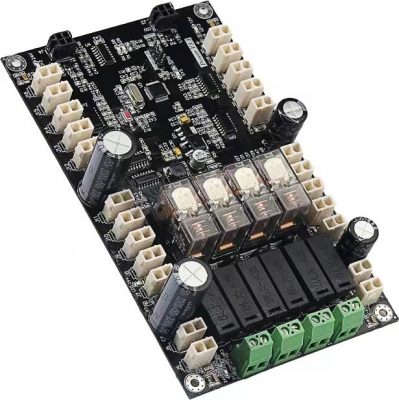As you probably know, not every PCB Design has the same strict rules like the spacing required for high-voltage PCB Design. Generally, if the normal working voltage of your product reaches or exceeds 30 VAC or 60 VDC, then you should terribly diligently consider the spacing rules in the circuit board design. If you have high-density circuit boards, especially high-voltage circuit boards, then you need pay more attention to. High density makes spacing more difficult and more important for protection.
Spacing is more important in high voltage PCB design, because the voltage on the circuit board assembly makes the arc between two conductive components more likely to occur on the printed circuit board. Any arc that does occur will bring higher risks to products and users. To help reduce risk, there are two main spacing measurement standards in PCB design, that is Electrical Clearance & Creepage Distance.

What is Electrical Clearance In PCB Design?
Electrical Clearance is the shortest distance through air between two conductors. And its definition takes into account remove the clearance, such as how much space is in the air before my head hits something. If the electrical clearance anywhere on the PCB is too small, an overvoltage event may create an arc between adjacent conductive components on the circuit board.
The Electrical Clearance rules vary with PCB material, voltage and environmental conditions. Among them, the environmental impact is quite significant. Most commonly, humidity changes the breakdown voltage of the air and affects the possibility of arcing. Dust is another standard factor, because particles gathered on the PCB surface will form tracks over time, shortening the distance between conductors.
Arcs can damage your products and users, so the spacing on the circuit board is a key design parameter.

What is Creepage Distance In PCB Design?
Similar to Electrical Clearance, Creepage Distance measures the distance between conductors on the PCB. However, instead of measuring the distance in the air, it measures the shortest distance along the surface of the insulating material. The board material and environment also affect the creepage distance requirements. The accumulation of moisture or particles on the circuit board is able to shorten the creepage distance, which is the same as when it is cleared.
When you use a high-density design, creepage may be a difficult requirement to meet. Since moving rails are rarely the first choice, there are other techniques for increasing the surface distance in the design. By adding slots or vertical isolation barriers between the tracks, the creepage distance can be significantly increased without changing the trace layout on the printed circuit board.

Consider Comparing Tracking Index (CTI of Your Material)
After the operating voltage, the most important factors in the Electrical Clearance and leakage requirements come from the material properties of the PCB. The electrical insulation of a material is represented by the “comparative tracking index” or CTI value. CTI is expressed as voltage, which is determined by standard tests and measures when a failure occurs on the surface of a material.
According to the breakdown value of the material, there are 0 to 5 categories. The mandatory insulation rating of the product is based on these CTI categories. Category 5 is the lowest, with values less than 100 V. For 600+ V faults, category 0 has the most powerful and often expensive material options.
PCB insulator materials have different breakdown voltages and corresponding product application safety categories.

So What Sholud We Do? How To Use The Correct Material & Spacing?
Since there are many variables in PCB design and material selection, the best option to meet safety requirements and standards is to go straight to the source. There are two standards I refer to most often. The first is IPC-2221, which is a general standard for PCB design Electrical Clearance and Creepage Distance guidance. The second is IEC-60950-1 (2nd edition). The IEC version is the standard you want to read for any IT products with AC mains or battery power, especially if you want to sell these products internationally.
Identifying and merging standards can be very time consuming, so you should use good PCB Design Software. The best software for PCB design allows you to create specific design rules and helps you find problems early in the process. And AltiumDesigner® meets these requirements and more; you can start designing before choosing a circuit board insulation material!

